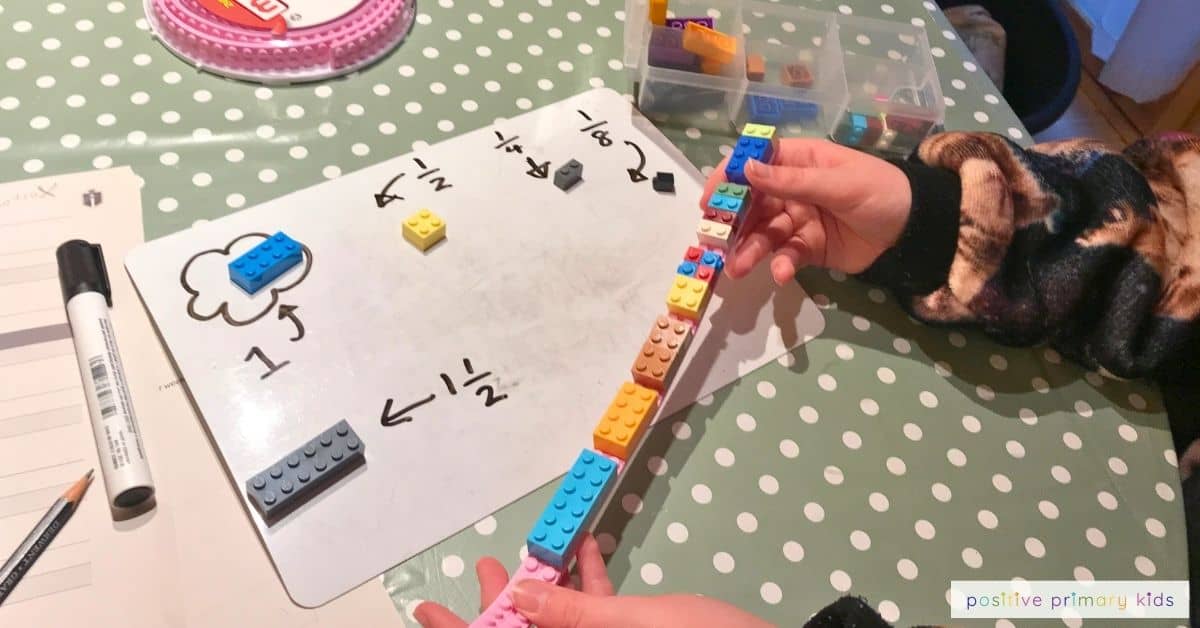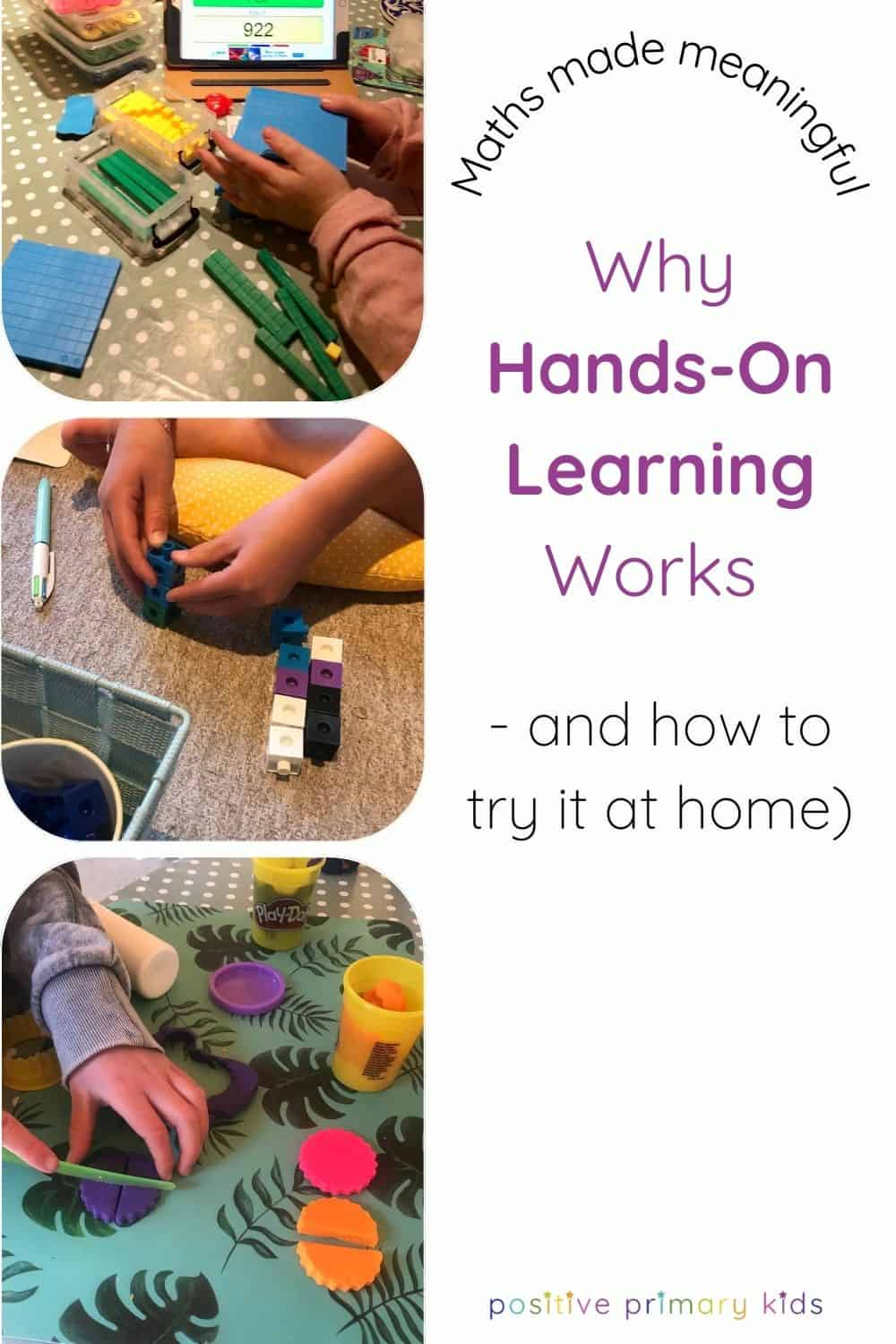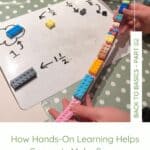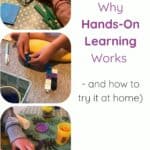Think of a time when you watched a child light up because they finally got it. That magical moment rarely comes from finishing a worksheet — it usually happens through hands-on exploration.
Whether it’s building number bonds with blocks or spotting patterns in dot games, tactile learning has a unique power to make abstract ideas click. In this post, we’ll explore why activities that engage the senses are so effective for learning, and how you can bring this approach into your home.
This is the second post in my Back to Basics maths series, where we’re looking at key concepts that build on each other — plus fun, hands-on activities you can try at home.
Affiliate Disclosure: This post may contain affiliate links. This means that I may receive a small commision – at no cost to you – if you make a purchase through these links. Thank you for your support!
Why Hands-On Learning Works
Hands-on learning — also called multisensory or whole-brain learning — involves engaging more than one sense at a time. Activities may combine touch, sight, sound, movement, or even smell and taste to explore ideas.
This approach activates different areas of the brain where information is received, processed, and stored. Neurons (our brain’s messenger cells) connect through pathways called synapses, and the more parts of the brain we activate, the stronger those connections become. Stronger connections mean better understanding and improved memory and recall.
Compared with passive learning — like listening to a teacher talk at the front of the class — hands-on learning invites children to participate actively. This makes learning more meaningful and far more memorable.
Who Benefits from Hands-On Learning?
Hands-on learning benefits all children, no matter how they process information. For neurotypical learners, it helps make abstract concepts more concrete. For neurodivergent children — including those with ADHD, autism, or dyslexia — it can be especially powerful.
Multisensory learning reduces cognitive load, increases focus and engagement, and allows children to use their strengths to explore new ideas. When learning is tactile and interactive, it becomes more inclusive, giving every child a chance to access the curriculum in a way that makes sense to them.
The Concrete-Pictorial-Abstract Approach
Hands-on learning is the foundation of a teaching method known as the Concrete–Pictorial–Abstract (CPA) approach.
Here’s how it works:
- Concrete: Children begin by exploring new concepts using physical objects they can move, sort, group or count. For example, using counters to model addition.
- Pictorial: Next, they move on to drawings, diagrams or visual models that represent the concept.
- Abstract: Finally, they use symbols and numbers (like 4 + 3 = 7) without needing the physical or visual support.
Starting with the concrete stage helps children build a strong mental image of the concept. This makes it easier to understand visual models and abstract representations later on.
Sadly, many schools use fewer concrete resources as children move into Key Stage 2. This can leave some children with gaps in understanding and knock their confidence. In my tutoring cabin, I use familiar resources like Numicon, Base 10, place value counters, and counting frames — not just with younger learners, but also with children in Years 4 to 6. More often than not, they’ll tell me they haven’t seen them in years — or ever. I really wish that wasn’t the case, because they do help.
Hands-On Learning with Core Maths Concepts Examples
In my recent post, The Importance of Number Sense: What It Is and How to Develop It, I talked about how number sense is the foundation of confident maths learning.
Hands-on activities are perfect for building number sense — particularly subitising (instantly recognising the number of items without counting) and number bonds (understanding how numbers combine or split).
For example, when a child uses blocks to show that 3 and 2 make 5, they’re seeing and feeling the relationship between the numbers. That kind of active exploration sticks.
🛠️ Try This at Home: 3 Simple Activities
These quick, low-prep activities use simple materials and engage multiple senses:
- Domino Addition
Use dominoes or two dice to practise addition. Children count the dots on each half and find the total — a great way to reinforce number bonds and subitising.
- Subitising Spinner
Write numbers 1–5 on wooden clothes pegs. Divide a paper plate into 5 sections with different dot patterns (not arranged like dice). Poke a pencil through the middle to make a spinner. Children spin, then match the dot pattern to the correct peg. Quick and visual!
- Number Bonds to 10 ‘Rock, Scissors, Paper’
Place both hands behind your back and count down, “3, 2, 1.” Reveal a number of fingers on each hand. Your child quickly shows the number of fingers needed to make 10. This one is energetic and fun — perfect for active learners!
In Summary
Hands-on learning isn’t just fun — it’s essential. By involving the senses, children build stronger neural connections and deepen their understanding of key concepts. Starting with concrete experiences lays the groundwork for success at the pictorial and abstract stages.
📅 Coming next in the Back to Basics series:
In the third post in the Back to Basics series, we’ll be exploring number sense and counting strategies — including engaging ideas for older children.
I'd love to hear from you...
What hands-on activities have worked well in your home?
Share in the comments below!









0 Comments